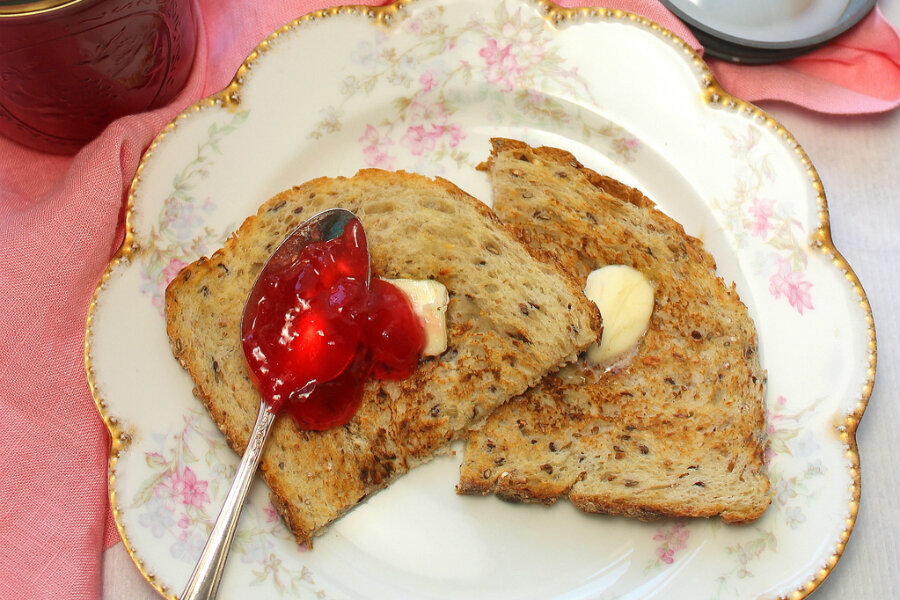Crab apple jelly
Loading...
I was fortunate enough to be at the market not very long ago, down at Findlay where the local farmers sell their goods out under the shed, when I stumbled across a guy who ran an orchard and one of the types of apples he keeps are the crab apple. The type he had for sale were these beautifully ruby colored ones called Dolgo, which is a type that is specifically excellent for making jelly.
I bought several quarts from him and then set about to make a few jars of jelly to last the season. I’m not a person who makes big batches of canning, as I like making a number of different things. I suppose it would be quite different if I had trees myself, or when I am canning from my garden, but when buying produce, I keep it small so I can use it all up before next year.
The actual process of making jelly is quite simple actually. The process of water-bath canning many jars is a tedious effort, as canners know well. It is also very steamy work. But if you are just doing a few jars, you can just safely keep them in the fridge if they will be used up before too long. If you are looking for more detailed instruction on water bath canning, you can follow what I have posted in my apple butter recipe. Once the jelly is the same, the process is the same.
I think the coloration on this jelly turned out wonderfully. And the flavor is very good as well. I am hoping to be a bit old-fashioned and try it on some roasted lamb very soon! I do hope you give it a try and that everything works out well for you.
Crab apple jelly
Makes 3 pints
Notes on preparing fresh apples:
1. To prepare apples, rinse them in cold water and cut a little off each end. Place in a pot with just enough water (you can use juice or cider for more intense flavor but I don’t see the point) to cover. Cook for about 25-30 minutes.
2. Once apples are cooked, set up a jelly bag on a stand over a bowl large enough to contain the juice. Spoon the apples and cooking water into the bag and allow it to drip without pressing the pulp (this causes cloudiness) for about 6 hours or overnight. Measure juice and proceed as directed; if you have extra juice you could freeze it for other uses.
3 cups juice
1-1/2 tablespoons pectin
3-1/2 cups sugar (or 2-1/4 cups for low sugar)
1 tablespoon butter
Sugar or lemon juice to balance the flavor (optional)
1. Whisk together the apple juice with the sugar and butter until it dissolves; bring to a boil. The butter is there to help reduce foaming. Taste the jelly at this point and if it is too sweet, add a touch of lemon juice; if it is too tart, add a little more sugar – how you like the taste is up to you and how tart your apples were. In this batch I added a teaspoon of lemon juice and then it was perfect!
2. Stir in pectin and boil for 1 minute. Check the jelly by dipping a cool teaspoon into the mix and then placing the spoon against an ice cube to cool down quickly. It should be a soft gel. If not, bring jelly to a boil again with another tablespoon of pectin and try again. Reason being that pectin amounts can vary by apple type and also how old the fruit is. So this will vary from batch to batch and not be the same twice.
3. When cooled jelly has a gel to it, pour into clean sterilized canning jars and seal using a safe water-bath canning method (I recommend Ball Blue books for information on how to can) or you can just keep it refrigerated if you will be using it up soon.
Related post on A Palatable Pastime: Apple butter






